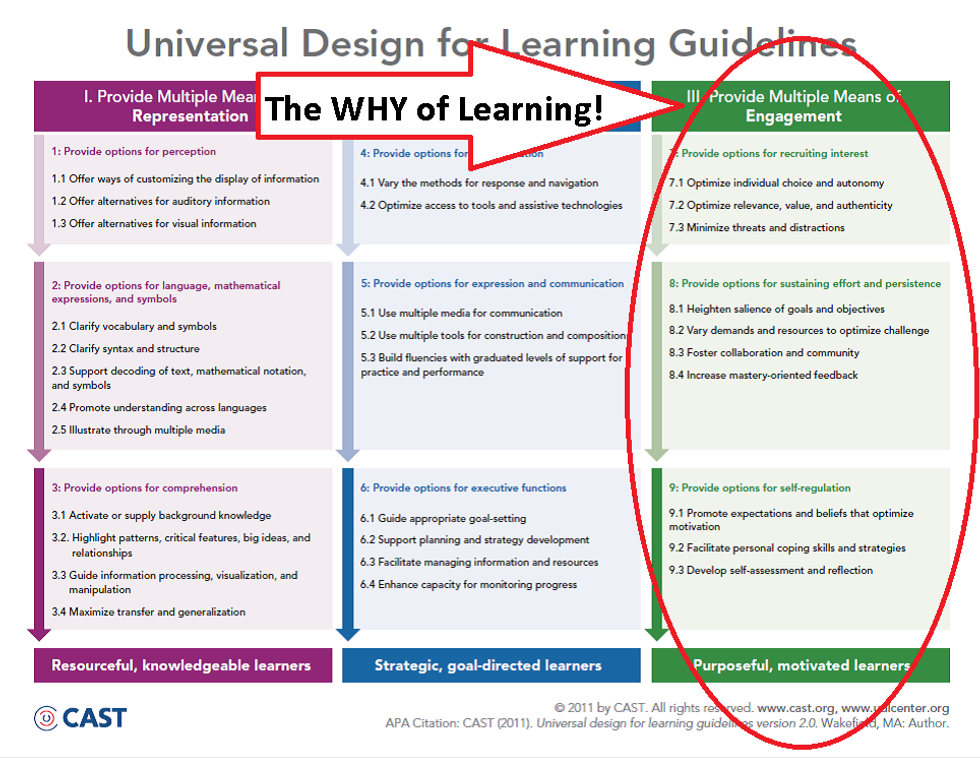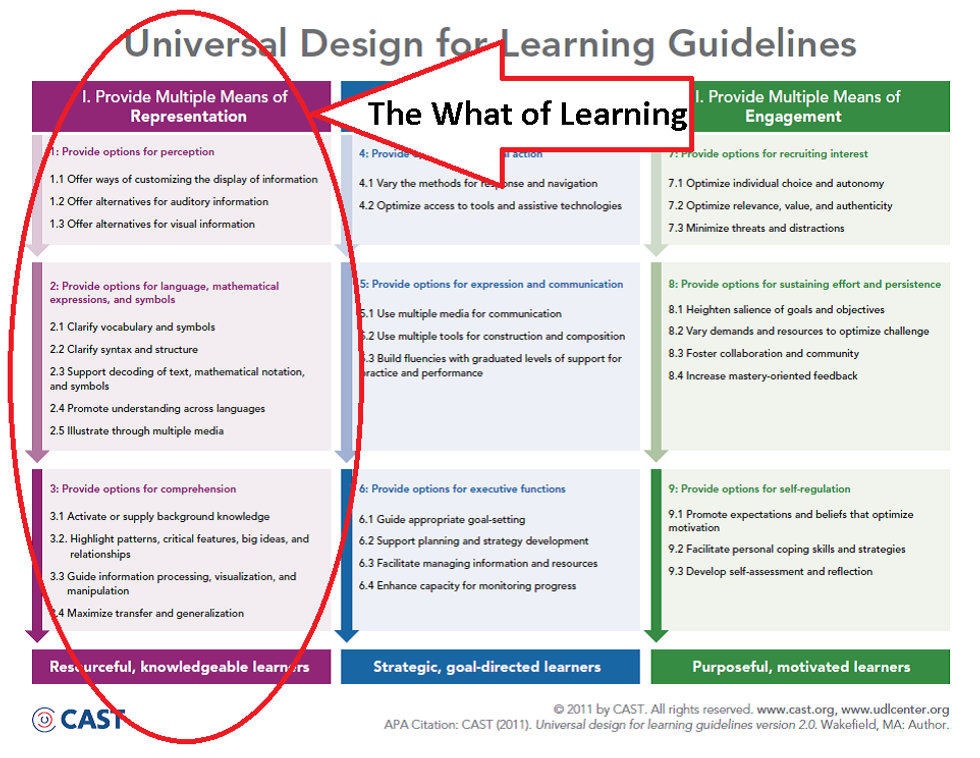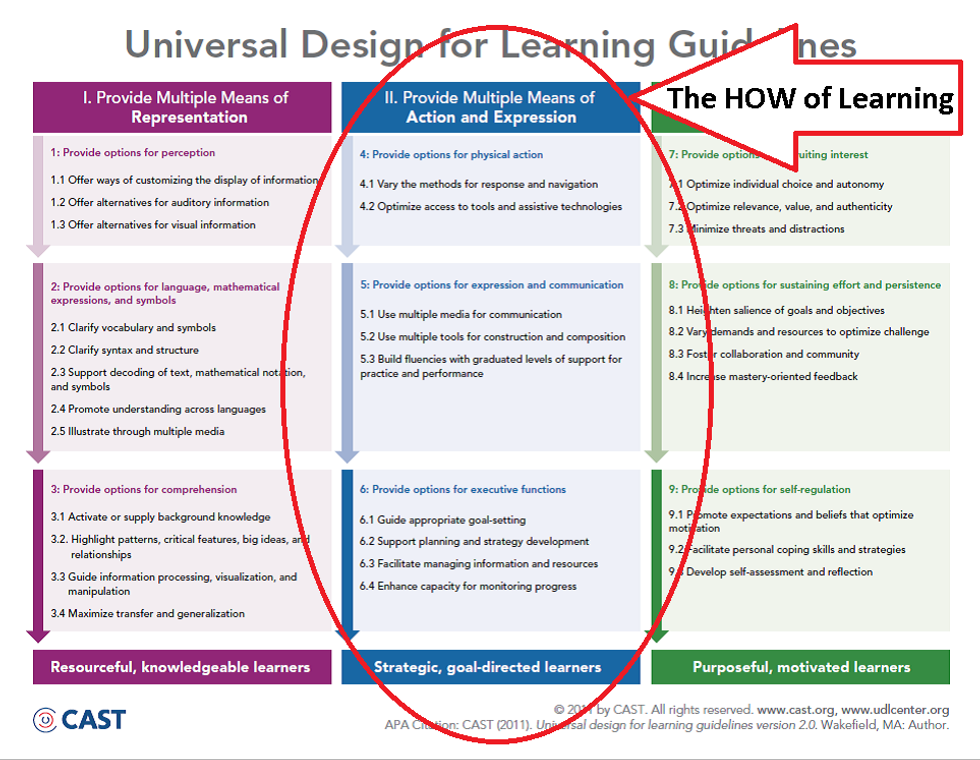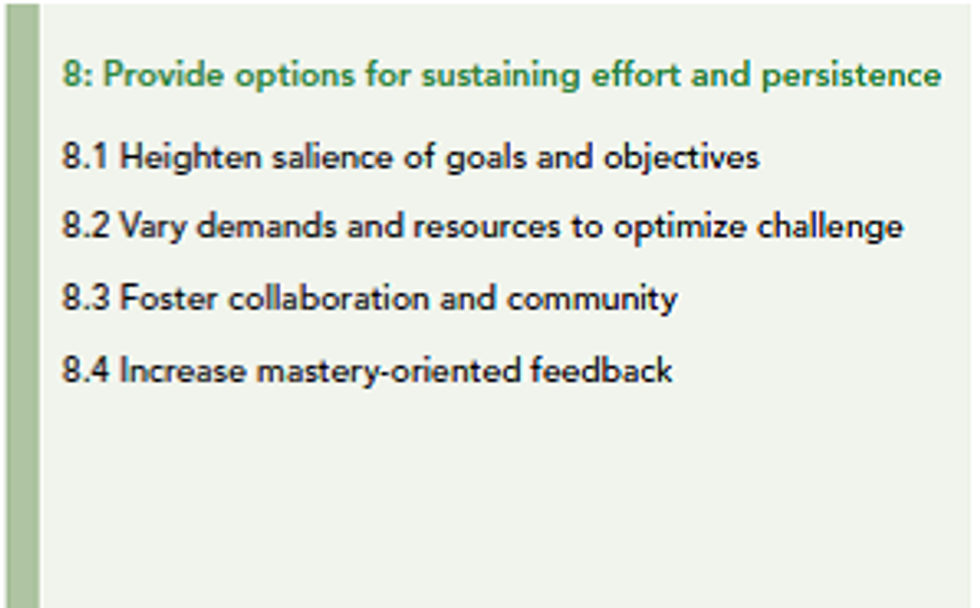As we continue our closer look at the Affective Network, the principle of Engagement or the WHY of learning, we are ready to move to guideline 8! We previously focused on guideline 7 associated with the principle of engagement: options for recruiting interest (see article) Universal Design for Learning: Deeper Dive 7.
For more information on the preceding guidelines associated with the recognition network of the brain or the What of learning see:
Guideline 1: options for perception: Universal Design for Learning: Taking a Deeper Dive
Guideline 2: options for language, mathematical expressions, and symbols: Universal Design for Learning: Taking a Deeper Dive 2
Guideline 3: options for comprehension: Universal Design for Learning: Deeper Dive 3
For more information on the guidelines associated with the strategic network of the brain or the How of learning see:
Guideline 4: options for physical action Universal Design for Learning: Deeper Dive 4
Guideline 5: options for expression and communication Universal Design for Learning: Deeper Dive 5
Guideline 6: options for executive functions Universal Design for Learning: Deeper Dive 6
Quick Recap about UDL: Starting with the base knowledge that Universal Design for Learning (UDL) is a framework for designing and delivering instruction based on the three networks of the brain associated with learning:
1. The Recognition Network or the What of learning
2. The Strategic Network or the How of learning
3. The Affective Network or the Why of learning (CAST 20012)
The three broad networks support the three principles of UDL (I) Provide multiple means of representation; (II) provide multiple means of action and expression; and (III) provide multiple means of engagement” (Rose & Meyer, 2002) and the subsequent nine guidelines.
We are going to move to the next guideline under the principle of engagement, guideline 8: options for sustaining effort and persistence. We previously noted affective networks “monitor the internal and external environment to set priorities, to motivate, and to engage learning and behavior” (Meyer, Rose, & Gordon p.54). Designing environments and learning experiences that provides options for students to sustain effort and persistence are paramount to maintaining student engagement. Let’s zero in on it!
What: Another way to define options for sustaining effort and persistence is providing scaffolding and choice to vary challenge, support, collaboration, and feedback. Sustaining effort and persistence “focuses on providing opportunities for students to connect with the goal of the lesson, naturally work with their peers, focus on the current task, and receive direct and supportive feedback” according to Lord Nelson (p. 48). When addressing the why of learning, Novak also suggests explaining and teaching the principles and guidelines to your students (p. 42). Because the Engagement guidelines “relate to engaging students or making the content interesting or relevant” they also tend to be of most interest to students “because frankly the Guidelines are all about them” (Novak p. 42). When attending to this guideline you are supporting sustained attention and effort that: reminds of the learning goal, motivates through challenge, promotes effective collaboration and communication, and provides feedback that is relevant, constructive, accessible, consequential, and timely. What possible variabilities are there to consider?
How: Once interest is recruited maintaining student effort and persistence through learning is a process. Growth mindset statements are very important to utilize when attending to this guideline. A culture of respect and inclusiveness is key to providing safety in both learning and risk taking. Likewise, “it helps immensely when descriptive feedback is part of a comprehensive approach to student-engaged assessment” (Berger, Rugen, & Woodfin p. 160). Bringing students into the learning process extends beyond engaging them in the lesson or activity. “When students are clear about the learning targets and are asked to set goals for their learning, and when they are taught the language and norms of critique and shown positive models of giving and receiving feedback” (Berger, Rugen, & Woodfin p. 161) they will find value persisting through learning.
Some questions to ask when planning and designing are:
- Have I provided a range of possible resources?
- How can I provide opportunities for students to collaborate with others?
- Have I differentiated the degree of difficulty with which activities can be completed?
- Have I fostered a collaborative environment?
- Have I given feedback about effort level, improvement in a timely manner?
When planning, some of the following examples can be considered:
Why: At the end of the day, we want expert learners. Individuals who are motivated and purposeful and have the skills do so regardless of context and without fear of failure. As students become active participants in leading their own learning and “more proficient using feedback, they become more independent learners” (Berger, Rugen, & Woodfin p.161). What teachers and parents wouldn't want students and children who are:
Berger, Ron, Rugen, Leah, & Woodfin, Libby. (2014) Leaders of Their Own Learning. San Francisco, CA: Jossey-Bass.
CAST, Inc. (2012) Retrieved from: http://www.udlcenter.org/aboutudl/whatisudl
Lord Nelson, Loui. (2014) Design and Deliver: Planning and Teaching Using Universal Design for Learning. Baltimore, MD: Brookes Publishing.
Meyer, A., Rose, H. D., Gordon, D. (2014). Universal Design for Learning, theory and practice. Wakefield, MA: CAST Professional Publishing.
Novak, Katie. (2014)) UDL Now. Wakefield, MA: CAST Publishing.




























